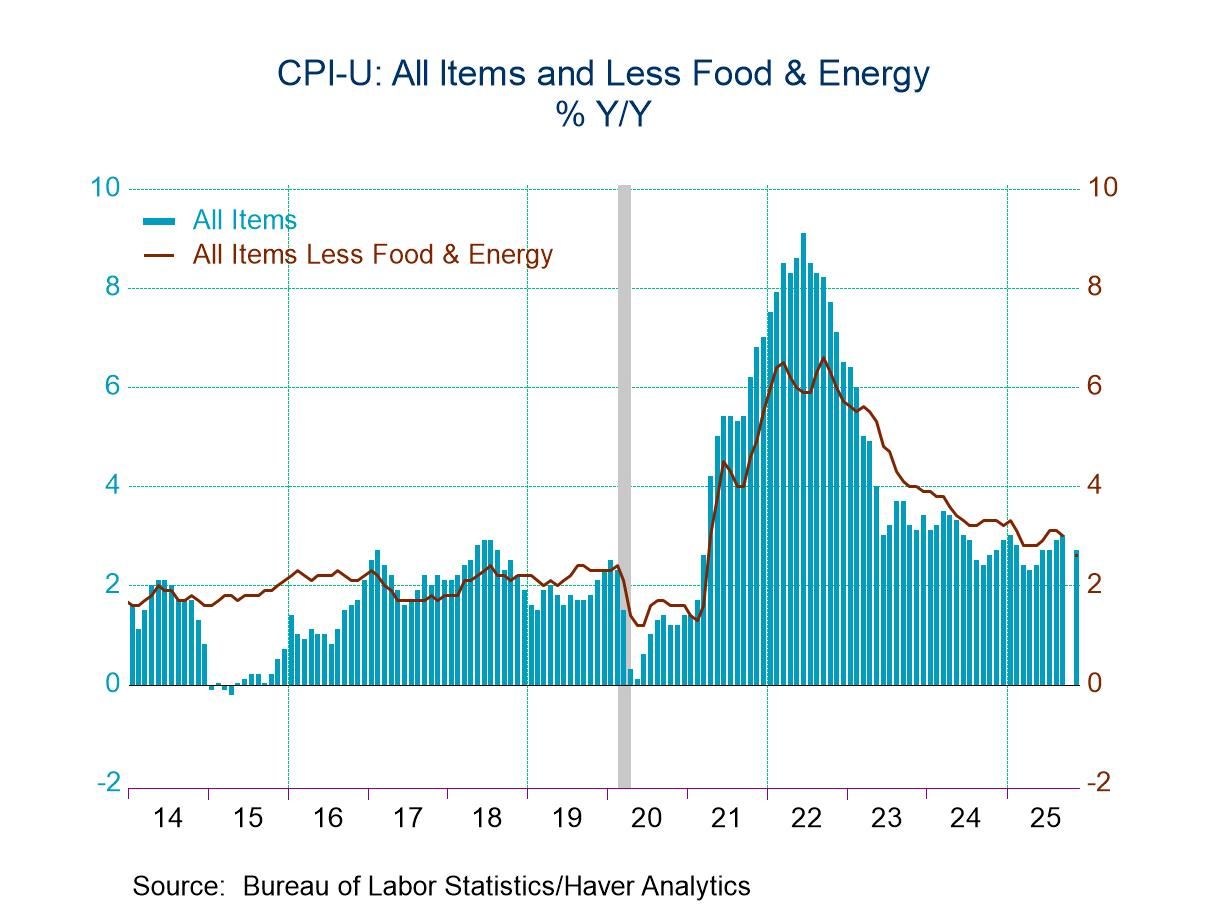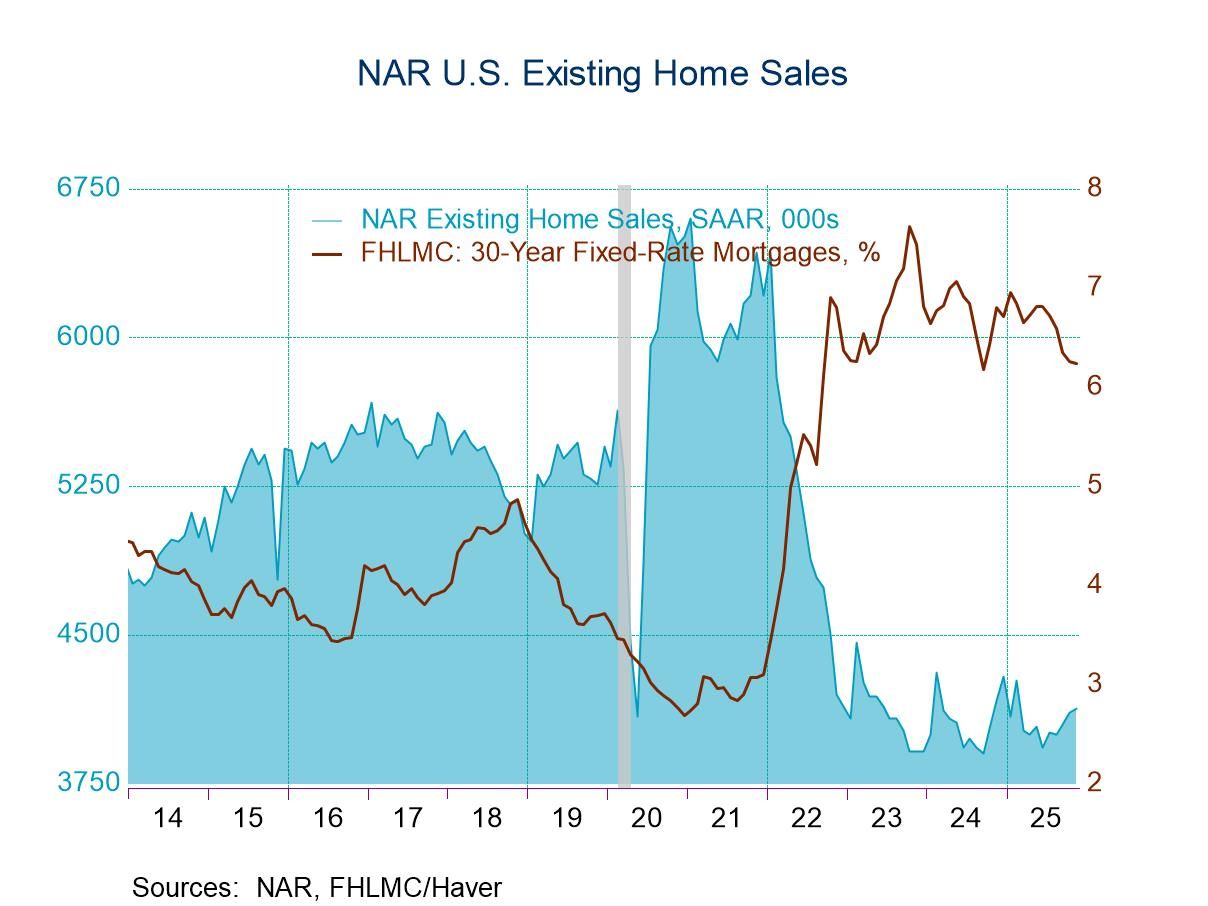U.S. ISM Manufacturing PMI Contracts in July to a Nine-Month Low
Summary
- 48.0 in July vs. 49.0 in June; the fifth consecutive month of contraction.
- Production (51.4) expands to a six-month high.
- New orders (47.1) contract for the sixth successive month.
- Employment (43.4) contracts to the lowest level since June ’20.
- Prices Index (64.8) indicates prices rise for the 10th straight month; exports & imports contracting.
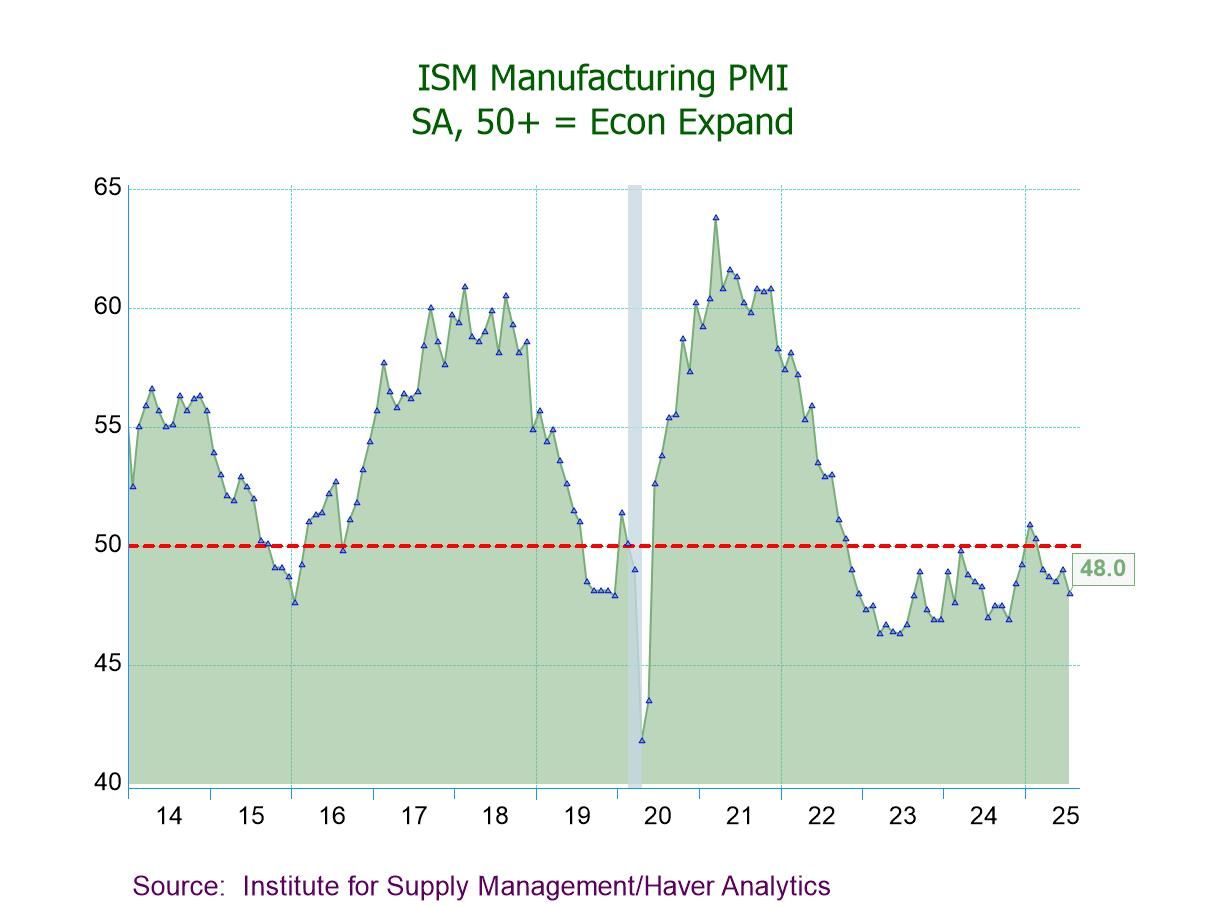

The ISM U.S. manufacturing PMI fell to 48.0 in July from 49.0 in June and 48.5 in May, according to the Institute for Supply Management. The July manufacturing PMI, below the 50 expansion-contraction dividing line, indicated that the U.S. manufacturing sector contracted for the fifth consecutive month and to the lowest level since October 2024. The July reading, while slightly higher than a low of 46.9 in October and 47.0 in July of last year, was below its recent high of 50.9 in January and a peak of 63.8 in March 2021. A reading of 49.5 for July had been expected in the Action Economics Forecast Survey.
The production index rose to 51.4 in July after rising to 50.3 in June, suggesting production expanded for the second successive month and to the highest level since January; it was up from its most recent low of 44.0 in April but slightly below a high of 53.7 in March 2024. Twenty percent (NSA) of respondents reported higher production in July while 19.2% reported lower.
The new orders index increased to 47.1 in July after falling to 46.4 in June, indicating new orders contracted for the sixth straight month but at a slightly less severe pace. The Index, while below its recent high of 55.1 in January, was up from a low of 42.7 in January 2023. Nearly nineteen percent (NSA) of respondents reported higher new orders in July while 25.9% reported declines. The inventories index, however, fell to 48.9 in July after rising to 49.2 in June, showing inventories contracted for the third consecutive month. The index was down from its recent high of 53.4 in March and a high of 56.5 in July 2022. Meanwhile, the supplier deliveries index fell to 49.3 in July from 54.2 in June, indicating faster delivery performance following seven straight months in slower territory. An 8.7% (NSA) of respondents reported slower delivery speeds in July while an increased 10.2% reported faster speeds.
On the labor front, the employment index fell to 43.4 in July after falling to 45.0 in June, indicating employment contracted for the sixth straight month and to the lowest level since June 2020. The index was down from its recent high of 50.3 in January and a high of 56.5 in March 2022. A 12.6% (NSA) of respondents reported higher employment in July while an increased 25.0% reported less hiring.
On the pricing front, the prices paid index declined to 64.8 (NSA) in July after rising to 69.7 in June, indicating raw materials prices rose for the 10th straight month but at the slowest rising rate since February. The July index remained well above a low of 39.4 in December 2022 but meaningfully below a high of 87.1 in March 2022 and a peak of 92.1 in June 2021. A decreased 35.4% (NSA) of respondents reported higher prices in July while 5.8% reported price declines.
In other ISM series not included in the composite index, the new export orders index slipped to 46.1 in July after increasing to 46.3 in June, indicating new export orders contracted for the fifth straight month. It was down from its recent high of 52.4 in January and a high of 57.1 in February 2022. The imports index edged up to 47.6 in July after rising to 47.4 in June, remaining at a contraction level for the fourth consecutive month; it was down from its recent high of 52.6 in February and a high of 55.4 in February 2022. The order backlog index increased to 46.8 (NSA) in July after declining to 44.3 in June, indicating falling backlog levels since October 2022. It was up from a low of 37.5 in May 2023 but down from a peak of 70.6 in May 2021.
The ISM figures are based on responses from over 400 purchasing and supply executives from 18 industries, which are weighted according to each industry’s contribution to GDP. These data are diffusion indexes where a reading above 50 indicates expansion; below 50 indicates contraction. The ISM Manufacturing PMI is a composite index based on the diffusion indexes of five of the indexes (seasonally adjusted) with equal weights: New Orders, Production, Employment, Supplier Deliveries, and Inventories. The figures from the Institute for Supply Management can be found in Haver’s USECON database; further detail is found in the SURVEYS database. The expectations number is available in Haver’s AS1REPNA database.
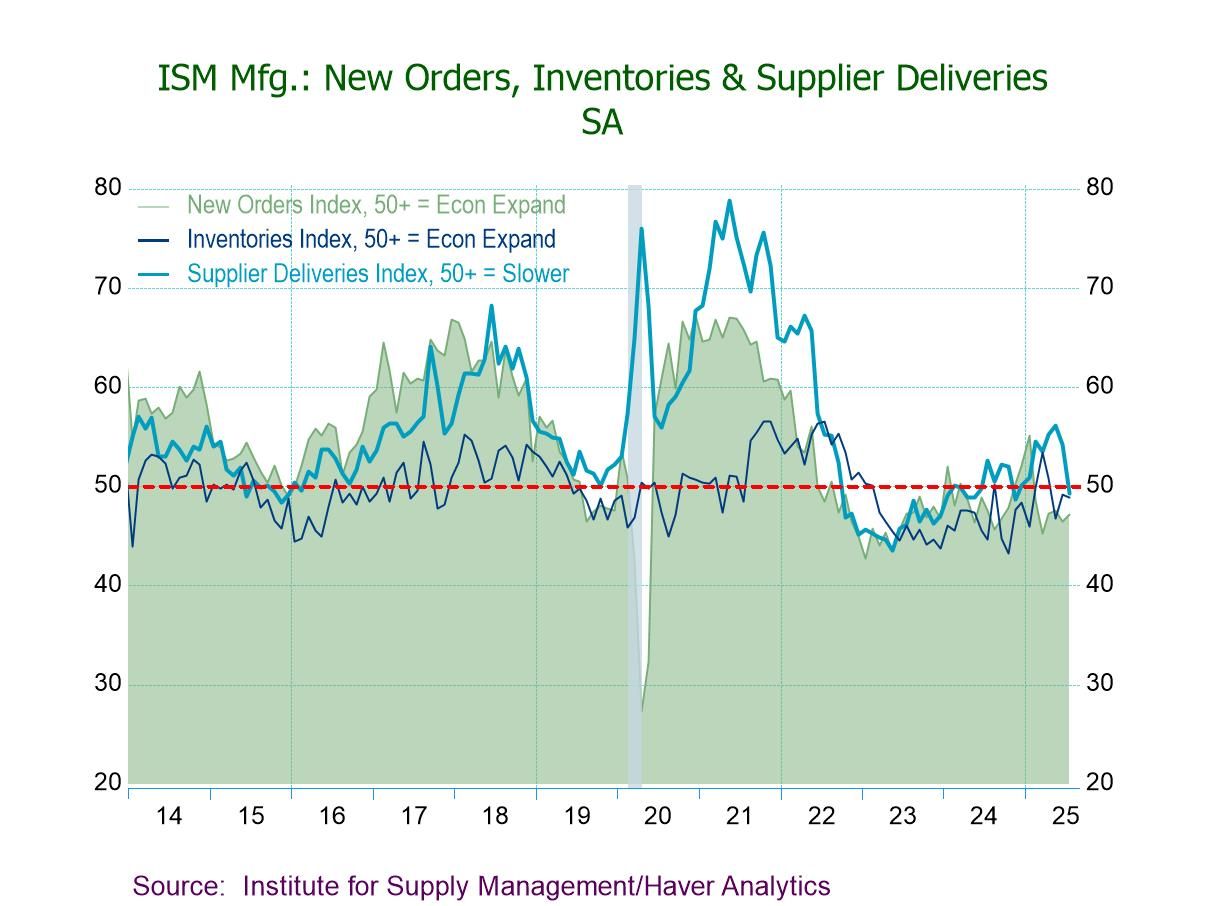
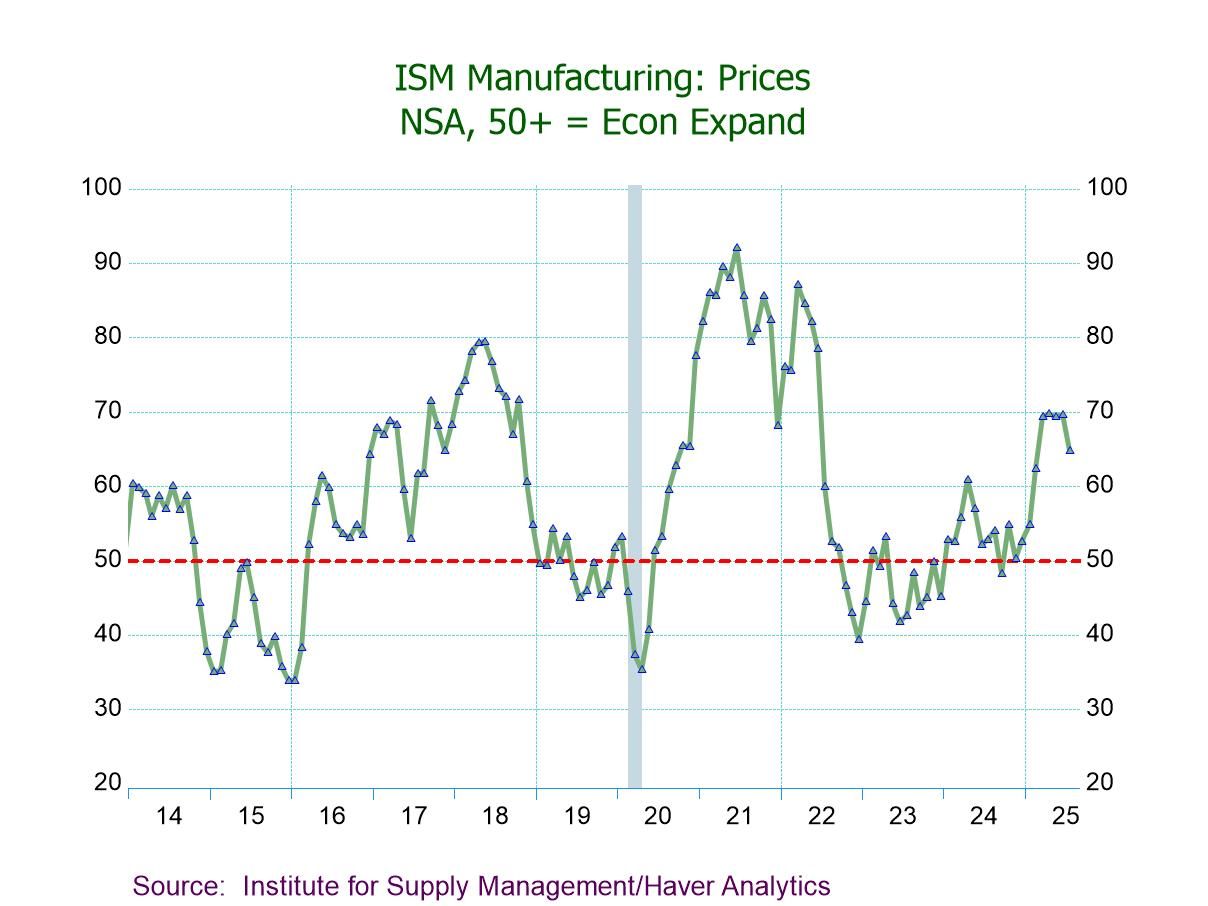
Winnie Tapasanun
AuthorMore in Author Profile »Winnie Tapasanun has been working for Haver Analytics since 2013. She has 20+ years of working in the financial services industry. As Vice President and Economic Analyst at Globicus International, Inc., a New York-based company specializing in macroeconomics and financial markets, Winnie oversaw the company’s business operations, managed financial and economic data, and wrote daily reports on macroeconomics and financial markets. Prior to working at Globicus, she was Investment Promotion Officer at the New York Office of the Thailand Board of Investment (BOI) where she wrote monthly reports on the U.S. economic outlook, wrote reports on the outlook of key U.S. industries, and assisted investors on doing business and investment in Thailand. Prior to joining the BOI, she was Adjunct Professor teaching International Political Economy/International Relations at the City College of New York. Prior to her teaching experience at the CCNY, Winnie successfully completed internships at the United Nations. Winnie holds an MA Degree from Long Island University, New York. She also did graduate studies at Columbia University in the City of New York and doctoral requirements at the Graduate Center of the City University of New York. Her areas of specialization are international political economy, macroeconomics, financial markets, political economy, international relations, and business development/business strategy. Her regional specialization includes, but not limited to, Southeast Asia and East Asia. Winnie is bilingual in English and Thai with competency in French. She loves to travel (~30 countries) to better understand each country’s unique economy, fascinating culture and people as well as the global economy as a whole.




